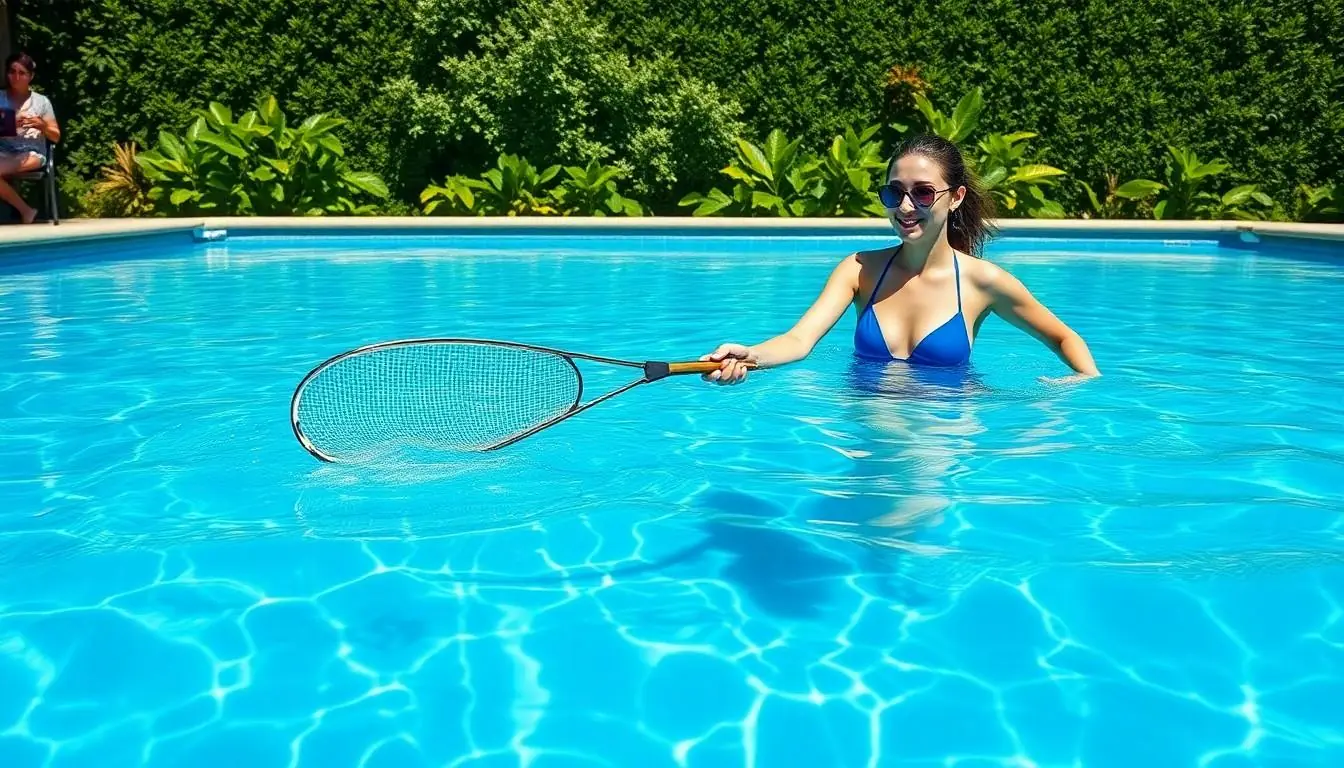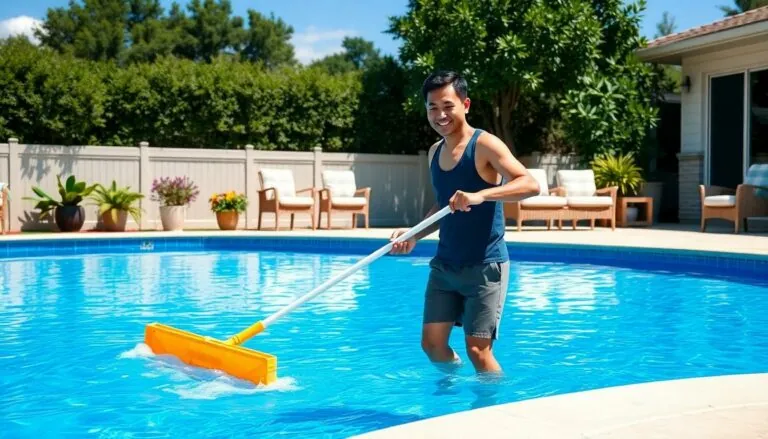Table of Contents
ToggleSummer’s just around the corner, and that glistening pool in the backyard is calling. But before diving into those refreshing waters, there’s a little thing called maintenance that can’t be ignored. After all, no one wants to take a dip in a swamp disguised as a swimming pool. With a bit of know-how, keeping that pool sparkling can be as easy as cannonballing into it!
Understanding Pool Maintenance
Proper pool maintenance keeps the water clean and safe for swimming. Regular upkeep prevents costly repairs and enhances the enjoyment of the pool.
Importance of Regular Maintenance
Regular maintenance contributes significantly to the longevity of pool equipment. Routine checks and cleaning reduce contaminants that can affect water chemistry. Maintaining balanced pH levels prevents discomfort for swimmers and keeps surfaces from deteriorating. Effective filtration systems require consistent attention to function optimally. Ignoring maintenance may lead to algae growth, which complicates cleaning efforts. It’s advisable to establish a weekly routine to manage these tasks easily.
Common Pool Issues to Address
Common pool issues include cloudy water, which indicates imbalanced chemicals. Algae blooms present a visibility problem and can create slippery surfaces, posing safety hazards. Clogged filters lead to reduced water flow, straining the pump and increasing energy costs. Equipment leaks can result in higher bills and potential structural damage over time. Ignoring these issues exacerbates problems, complicating fixes and costly repairs down the line. Regular inspections catch these problems early, ensuring a safe swimming environment.
Essential Pool Maintenance Tips

Maintaining a clean and safe swimming pool requires regular attention. Here are essential tips for effective pool upkeep.
Cleaning Your Pool
Regular cleaning keeps the pool inviting and enjoyable. Skim the surface daily to remove leaves and debris. Brush the walls and floor weekly to prevent algae buildup. Vacuuming the pool weekly ensures it stays spotless. Empty the skimmer and pump baskets frequently to ensure optimal filtration. Inspect the filter system and clean it as needed. A clean pool not only looks appealing but also enhances the swimming experience.
Balancing Water Chemistry
Balanced water chemistry is crucial for a safe swim environment. Test the water at least twice weekly to monitor pH, chlorine, and alkalinity levels. Adjusting pH levels between 7.2 and 7.8 keeps the water comfortable and clear. Maintain chlorine levels between 1-3 parts per million (ppm) for effective sanitation. Add shock treatments as needed to address high bather loads or after heavy rain. Regular balancing prevents algae growth and standardizes the longevity of pool equipment.
Seasonal Maintenance Tasks
Seasonal maintenance tasks are crucial for pool upkeep. Addressing these tasks keeps the pool clean and functional throughout the year.
Spring Preparation
Spring preparation ensures the pool is ready for use. Inspecting equipment like filters and pumps is essential, as is cleaning any debris accumulated during winter. Users should check water levels and refill as needed. Testing water chemistry right after opening helps establish balanced pH and chlorine levels, which should be between 7.2 and 7.8 for pH and 1-3 ppm for chlorine. Finally, adding algaecide during initial maintenance prevents algae growth as temperatures rise.
Winterizing Your Pool
Winterizing the pool protects it from cold weather damage. First, users should clean the pool thoroughly, removing leaves and dirt. Lowering the water level below the skimmer is crucial to prevent freezing. Adding winterizing chemicals helps maintain water balance during the off-season. Covering the pool securely with a winter cover keeps debris out and reduces maintenance next spring. Lastly, all equipment should be drained and stored properly to extend its life.
Equipment and Tools for Pool Care
Effective pool maintenance relies on using the right equipment and tools. Utilizing quality gear simplifies cleaning and upkeep tasks, ensuring a safe and enjoyable swimming environment.
Recommended Cleaning Tools
Skimmers play a crucial role in removing debris from the water’s surface. Brushes help eliminate dirt and algae buildup on walls and floors. A vacuum, specifically designed for pools, efficiently removes dirt from the bottom. Test kits provide essential data on water chemistry, allowing for better management of pH and chlorine levels. Additionally, telescopic poles offer versatility for reaching deep areas of the pool, enhancing cleaning efficiency.
Must-Have Maintenance Equipment
Filters keep pool water clean by trapping particles and contaminants. Pumps circulate water properly, ensuring even distribution of chemicals and maintaining hygiene. Water heaters enhance comfort for swimmers during cooler months, making use of the pool more enjoyable. Algae treatments and clarifiers contribute to maintaining clear water, preventing algae blooms. Regularly checking and replacing essential components of this equipment ensures optimal functionality, preventing costly repairs down the line.
Effective pool maintenance is key to enjoying a clean and safe swimming environment. By implementing the right practices and staying proactive, pool owners can prevent common issues and costly repairs. Regular cleaning and water testing not only enhance the pool’s appearance but also ensure its longevity.
Investing time in maintenance tools and equipment pays off in the long run. Whether it’s balancing water chemistry or preparing for seasonal changes, consistent upkeep makes all the difference. With these tips in mind, anyone can enjoy a sparkling pool all summer long.




